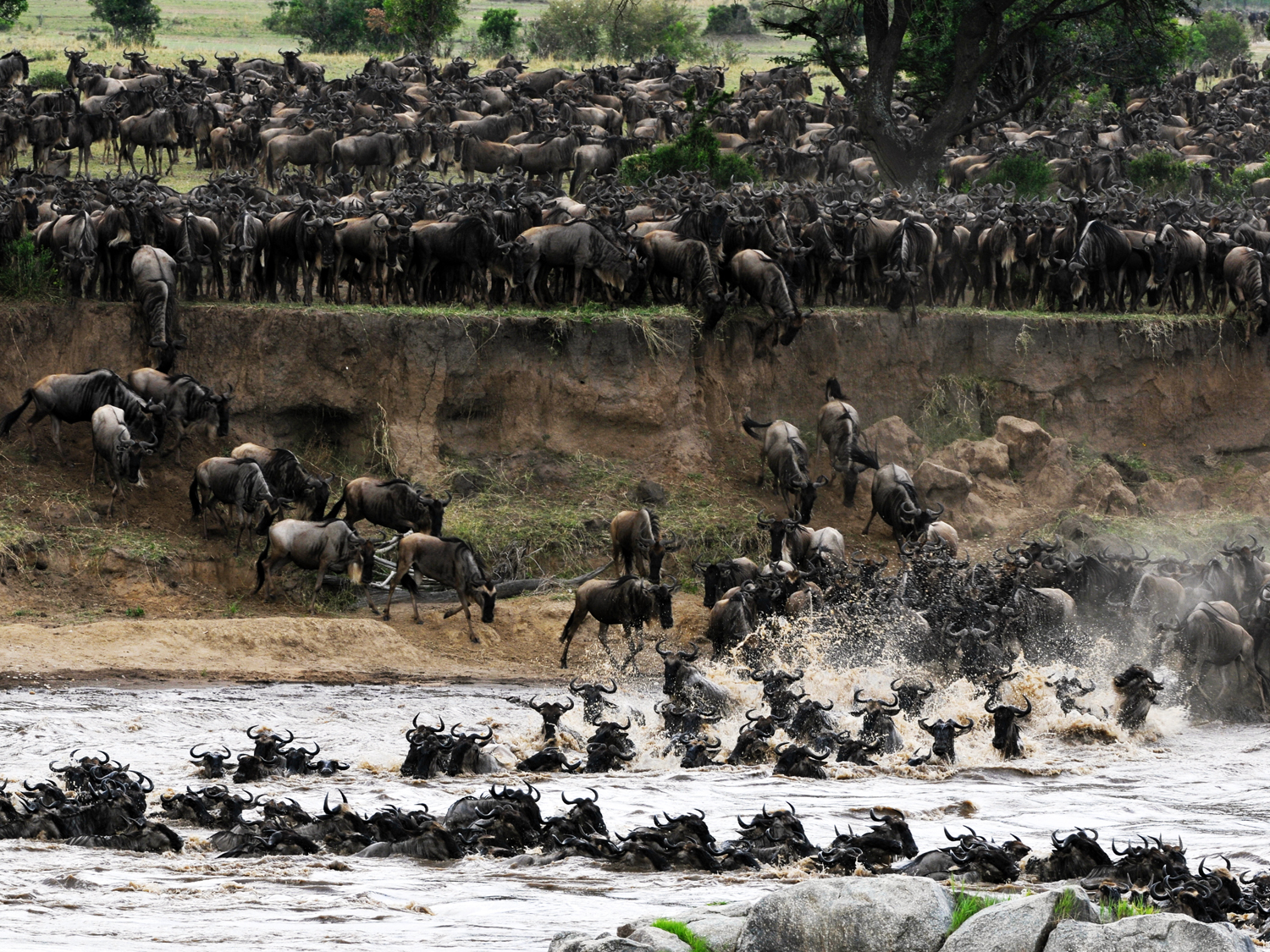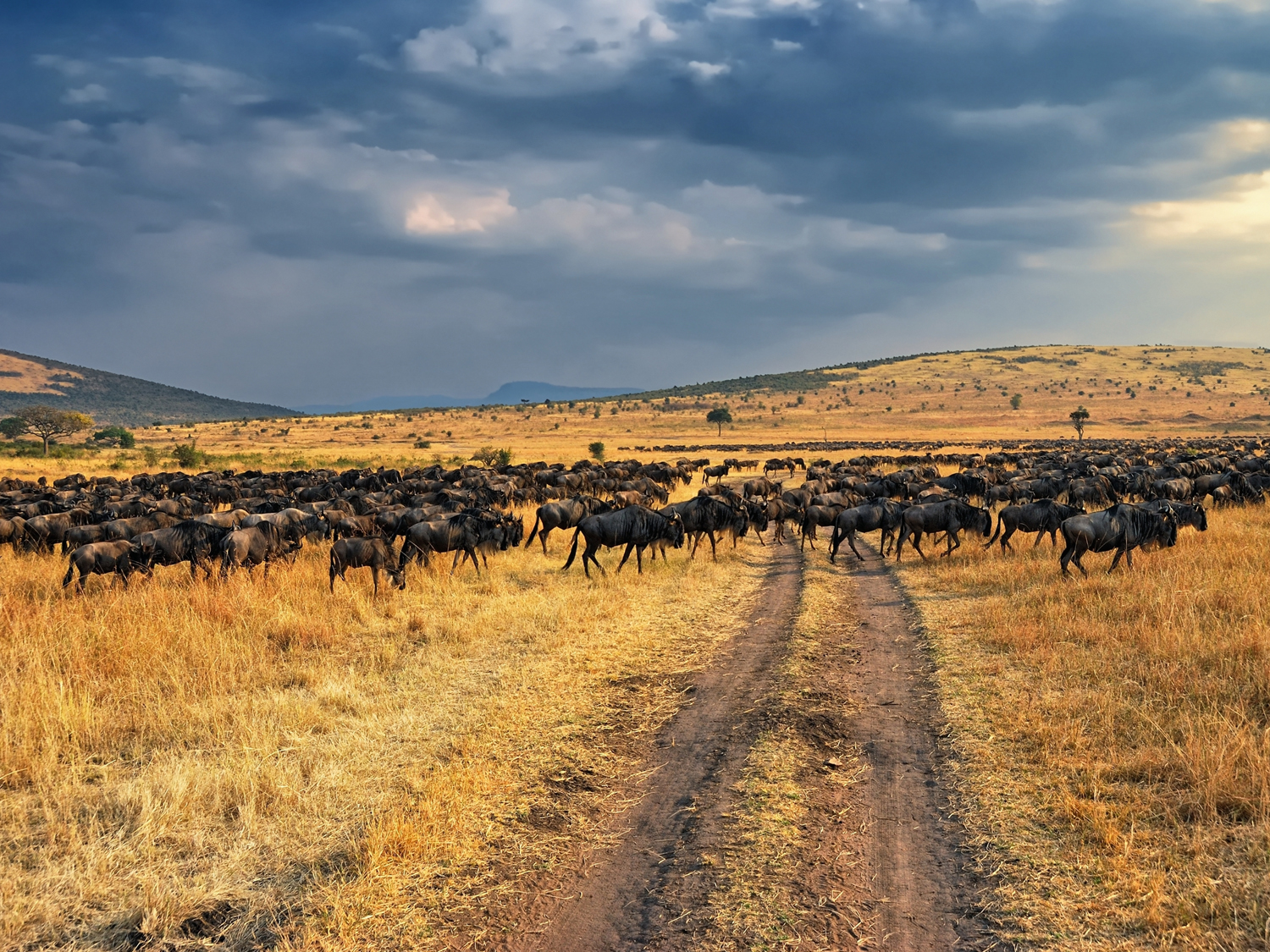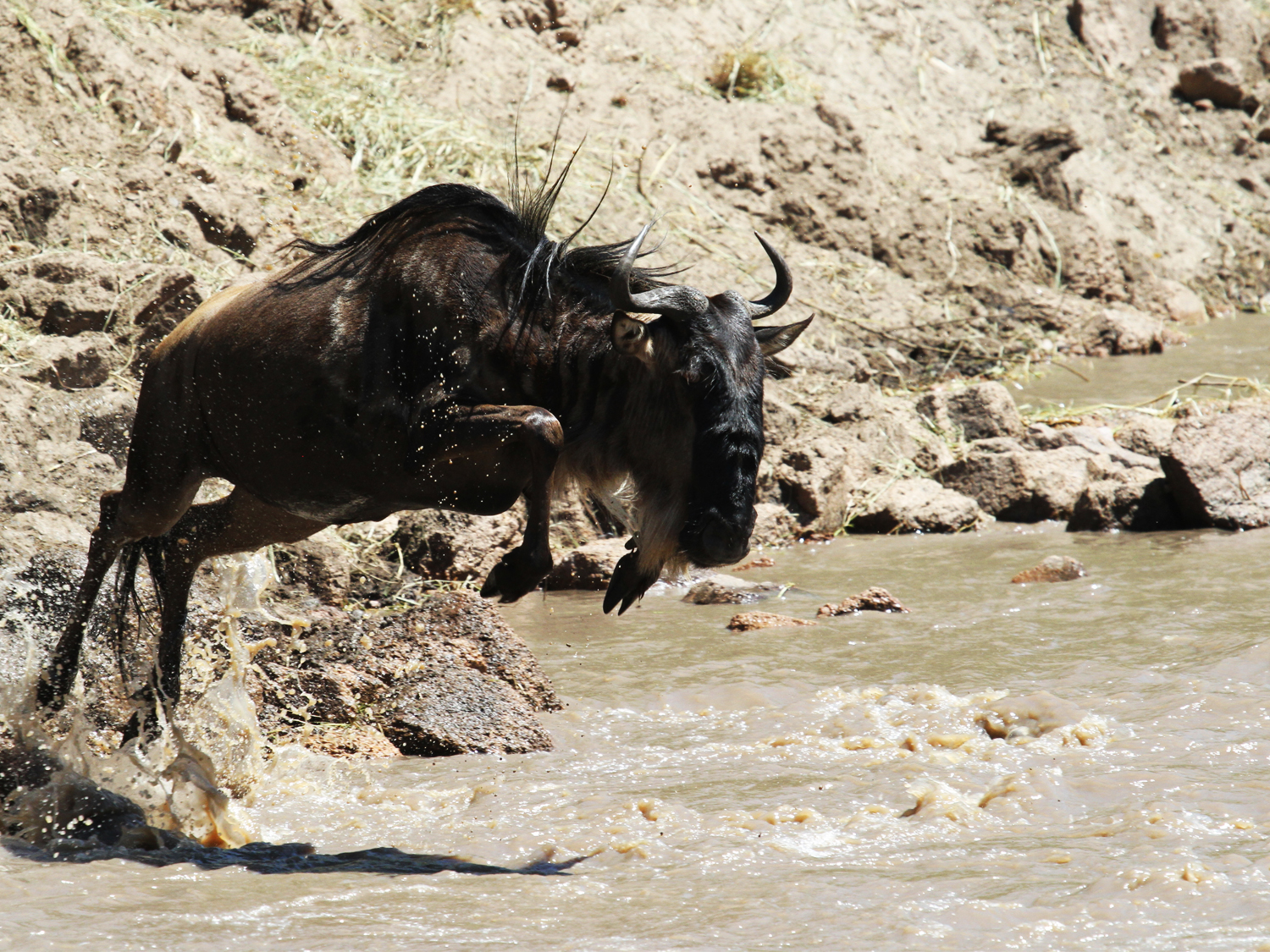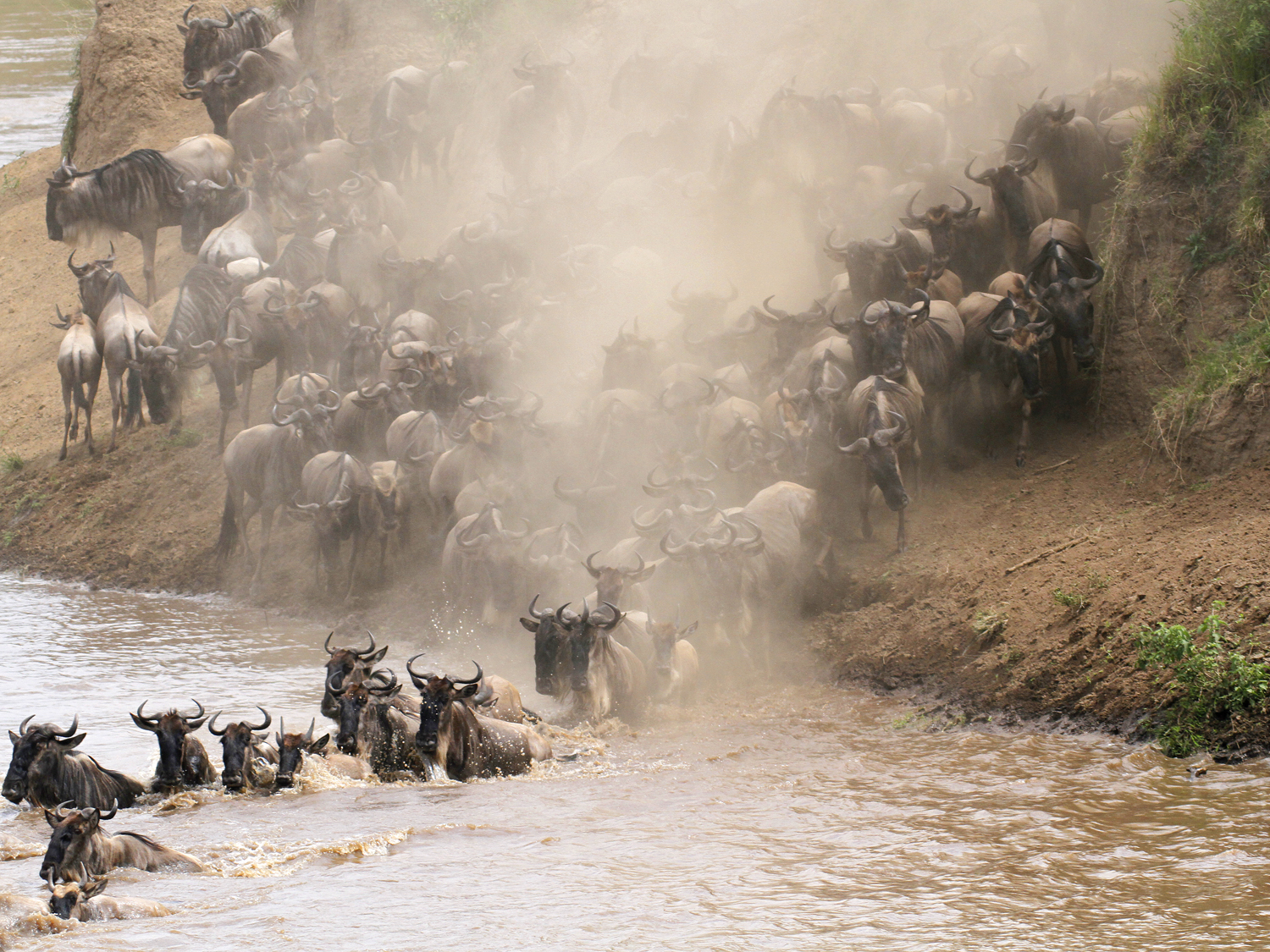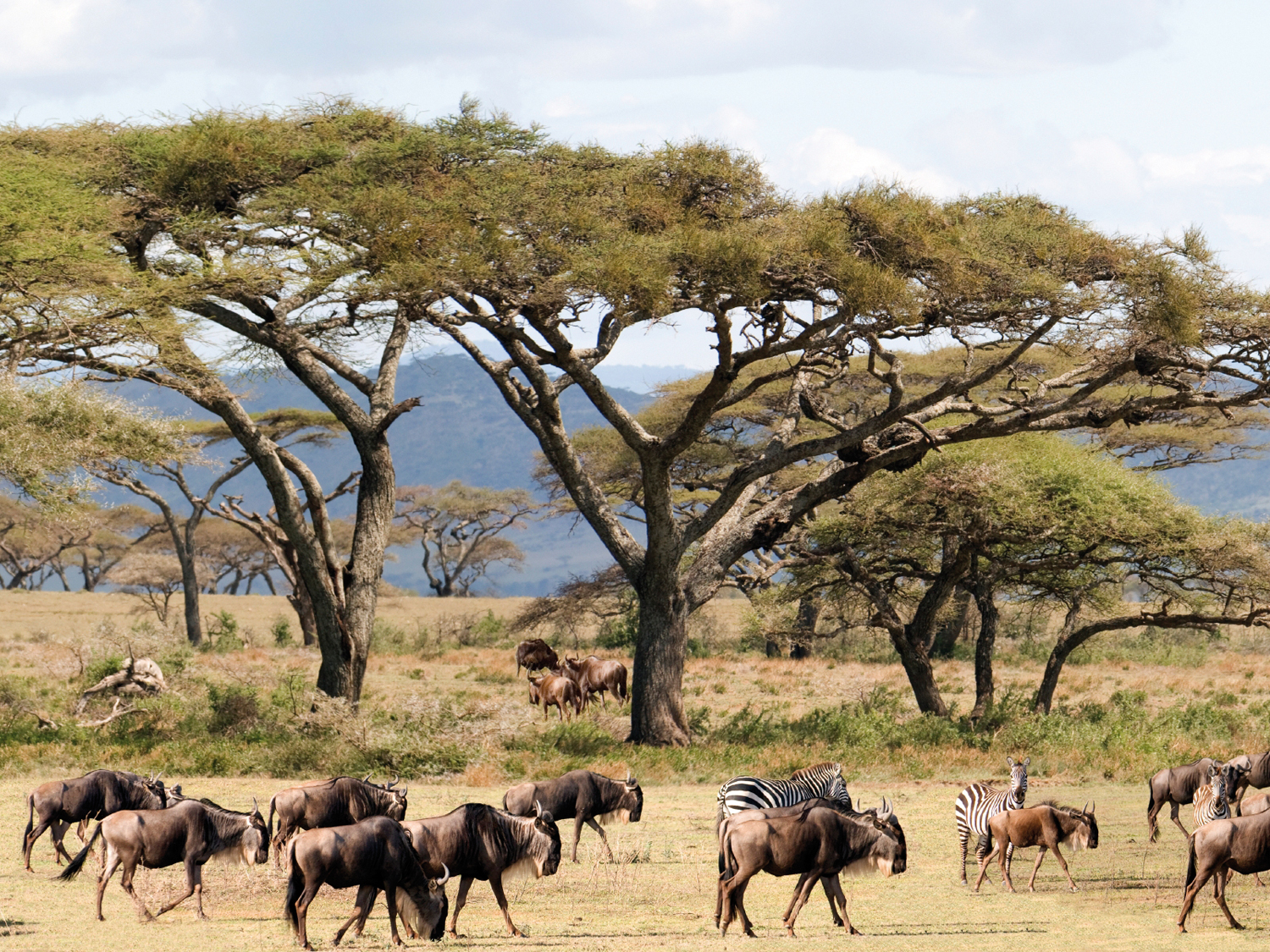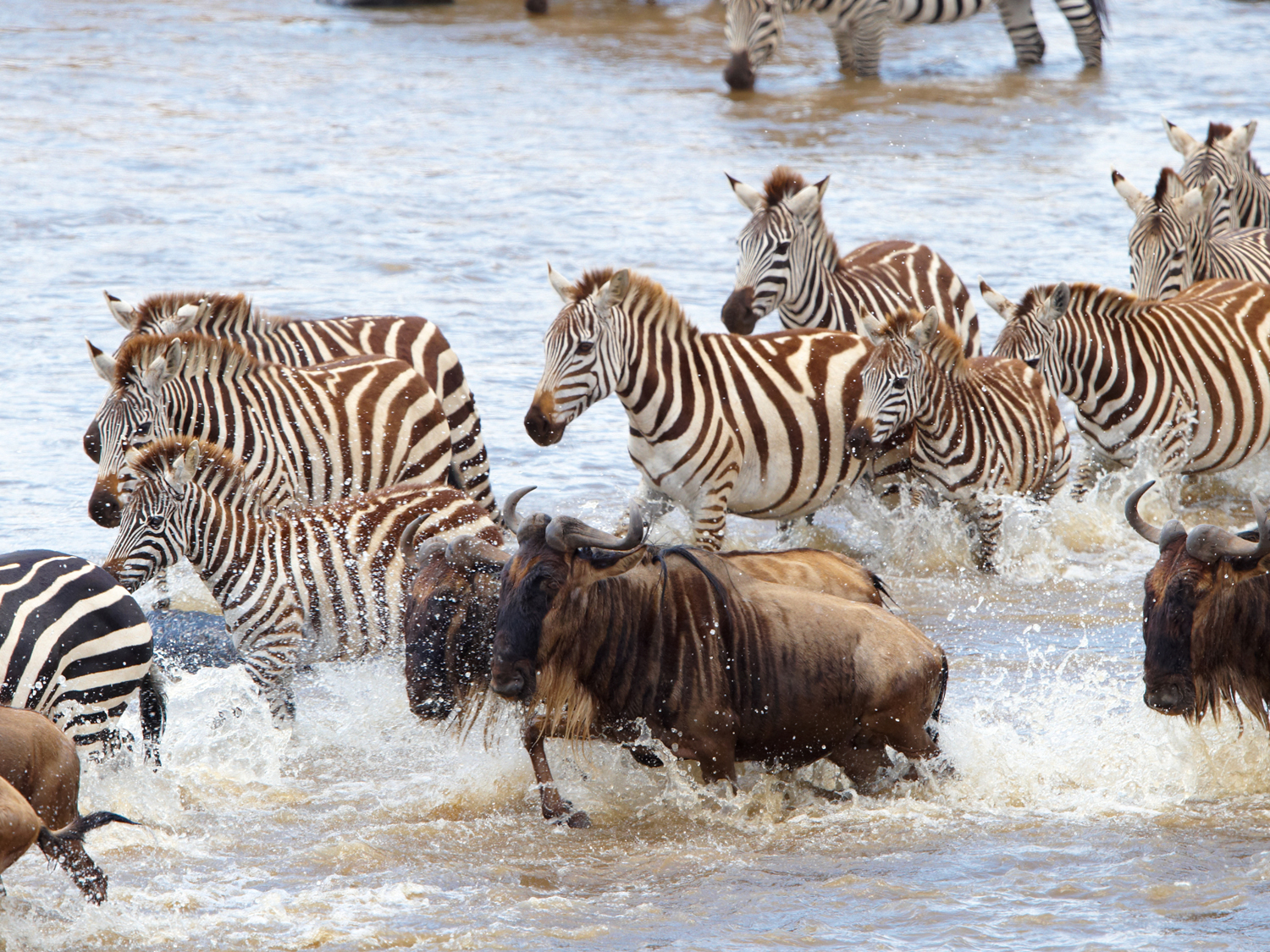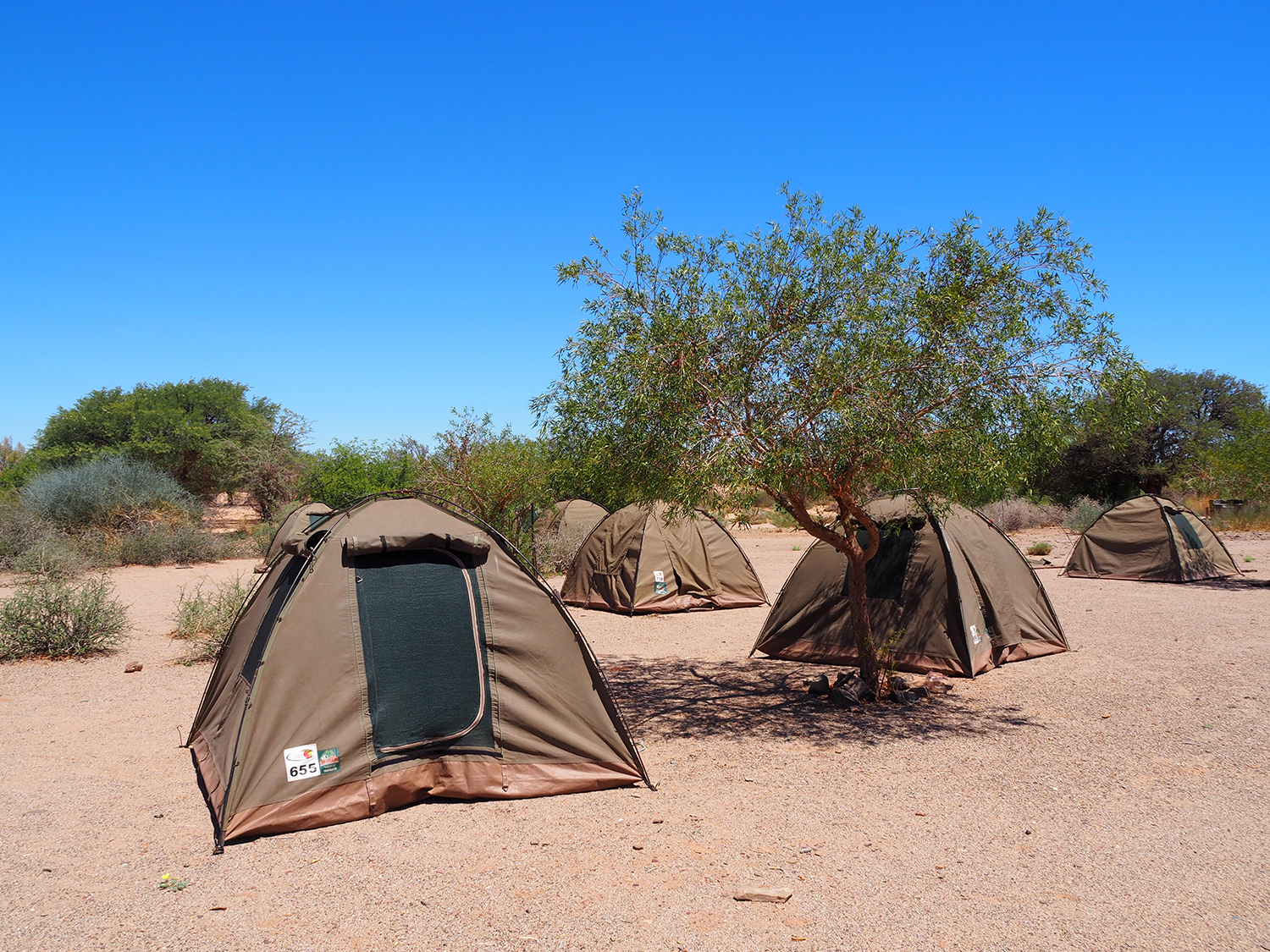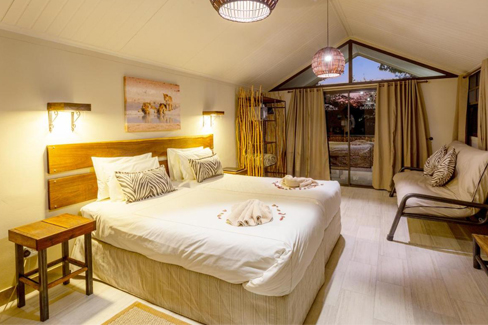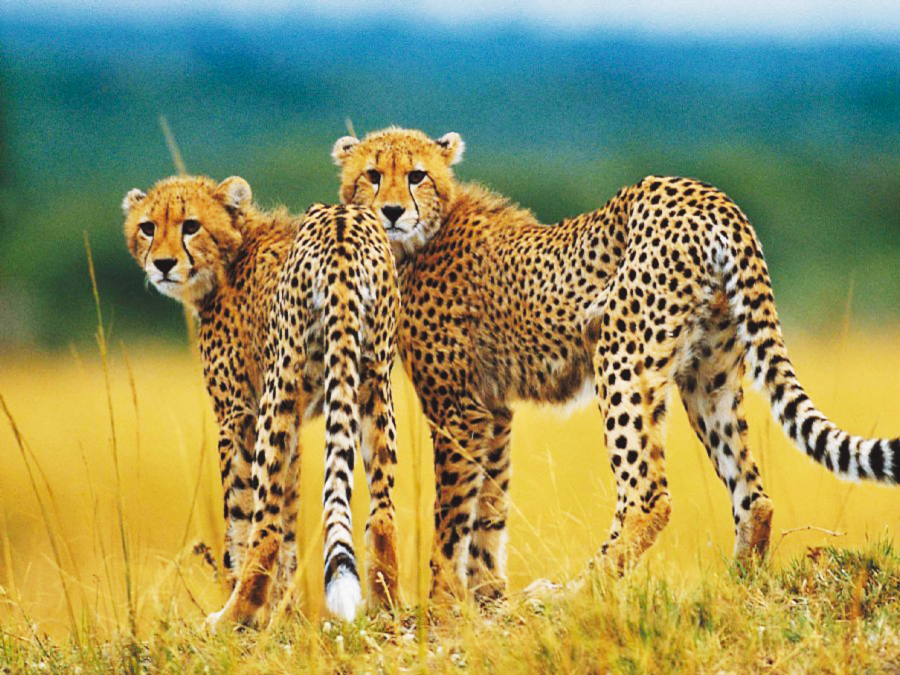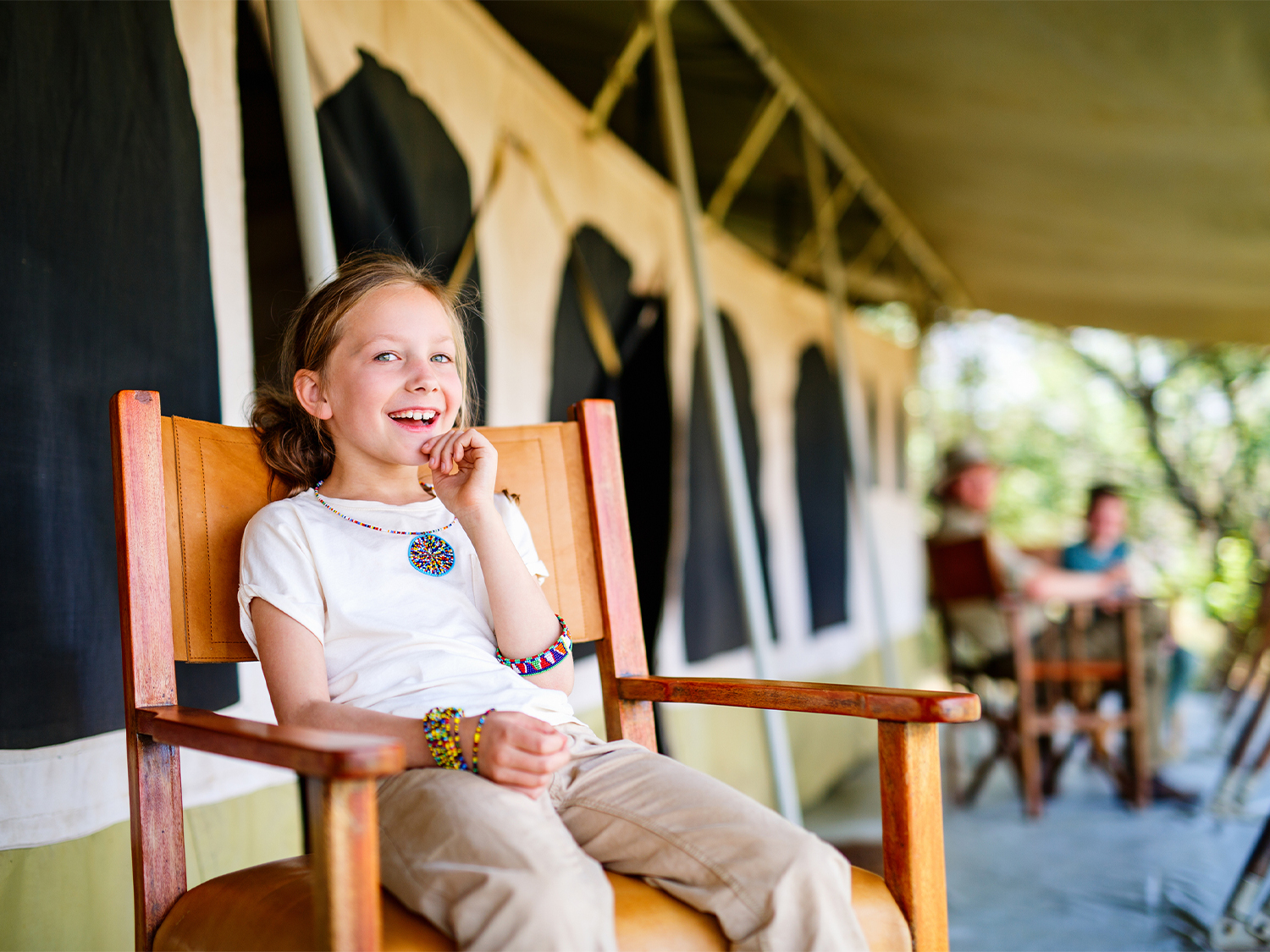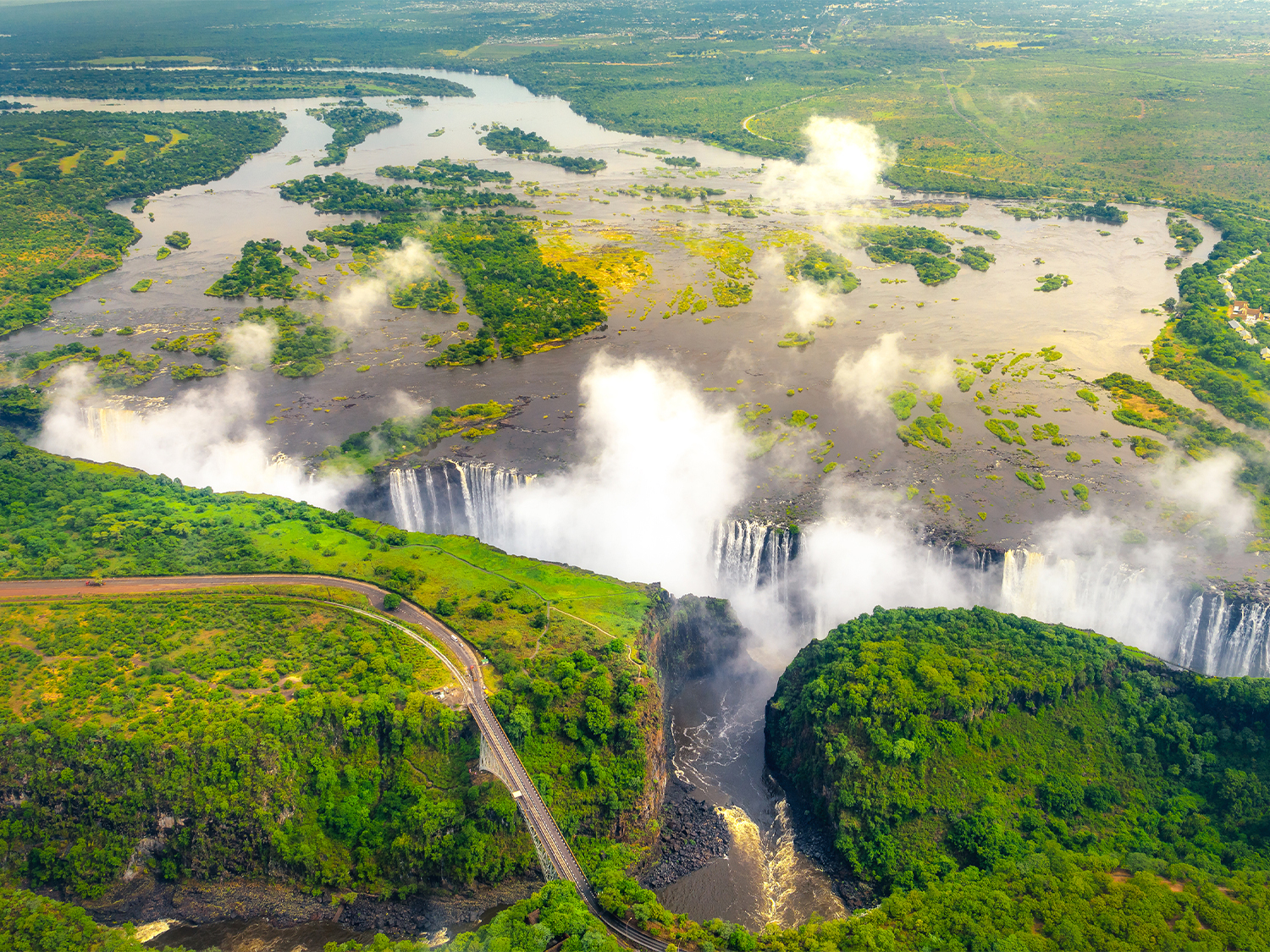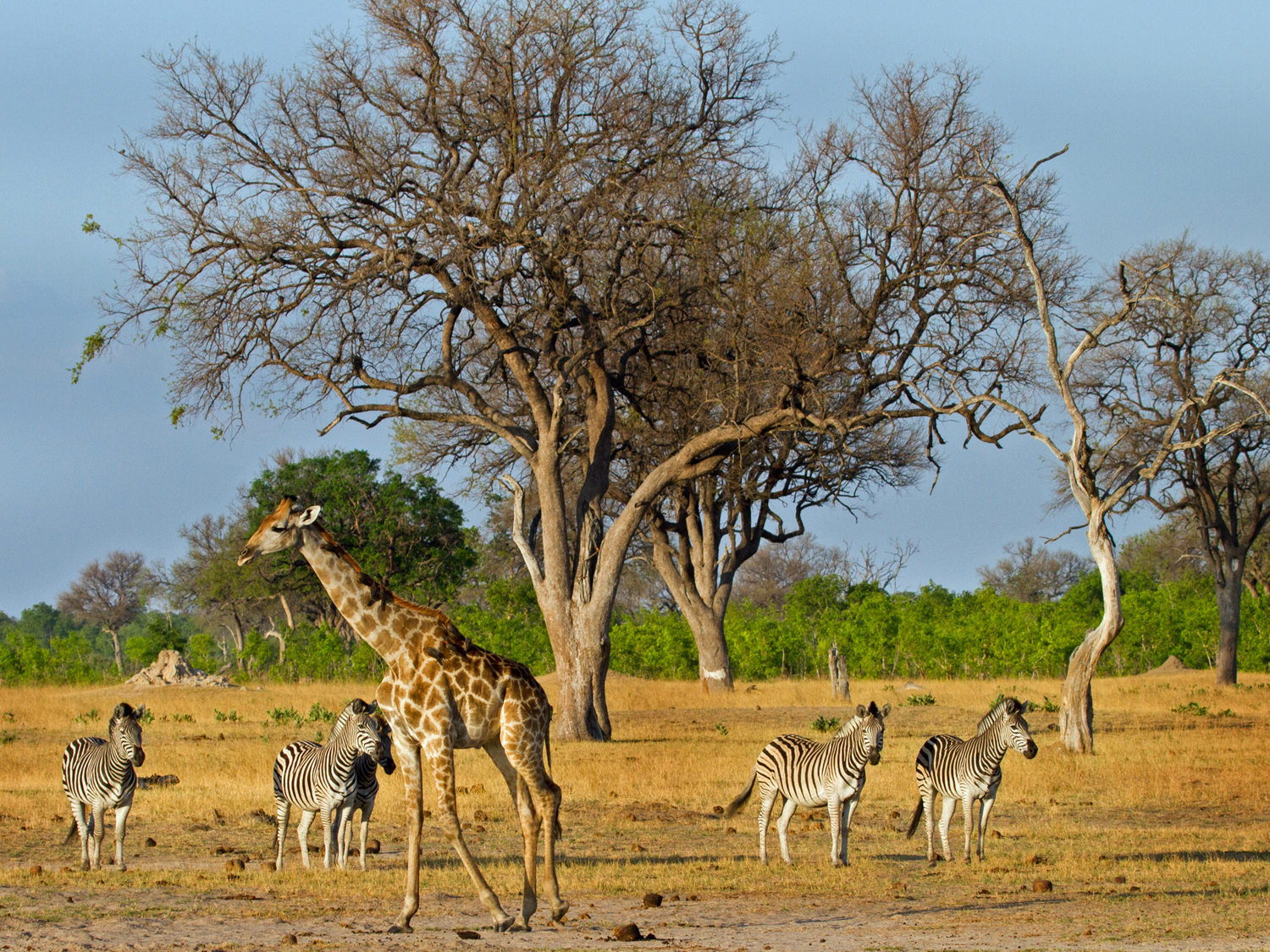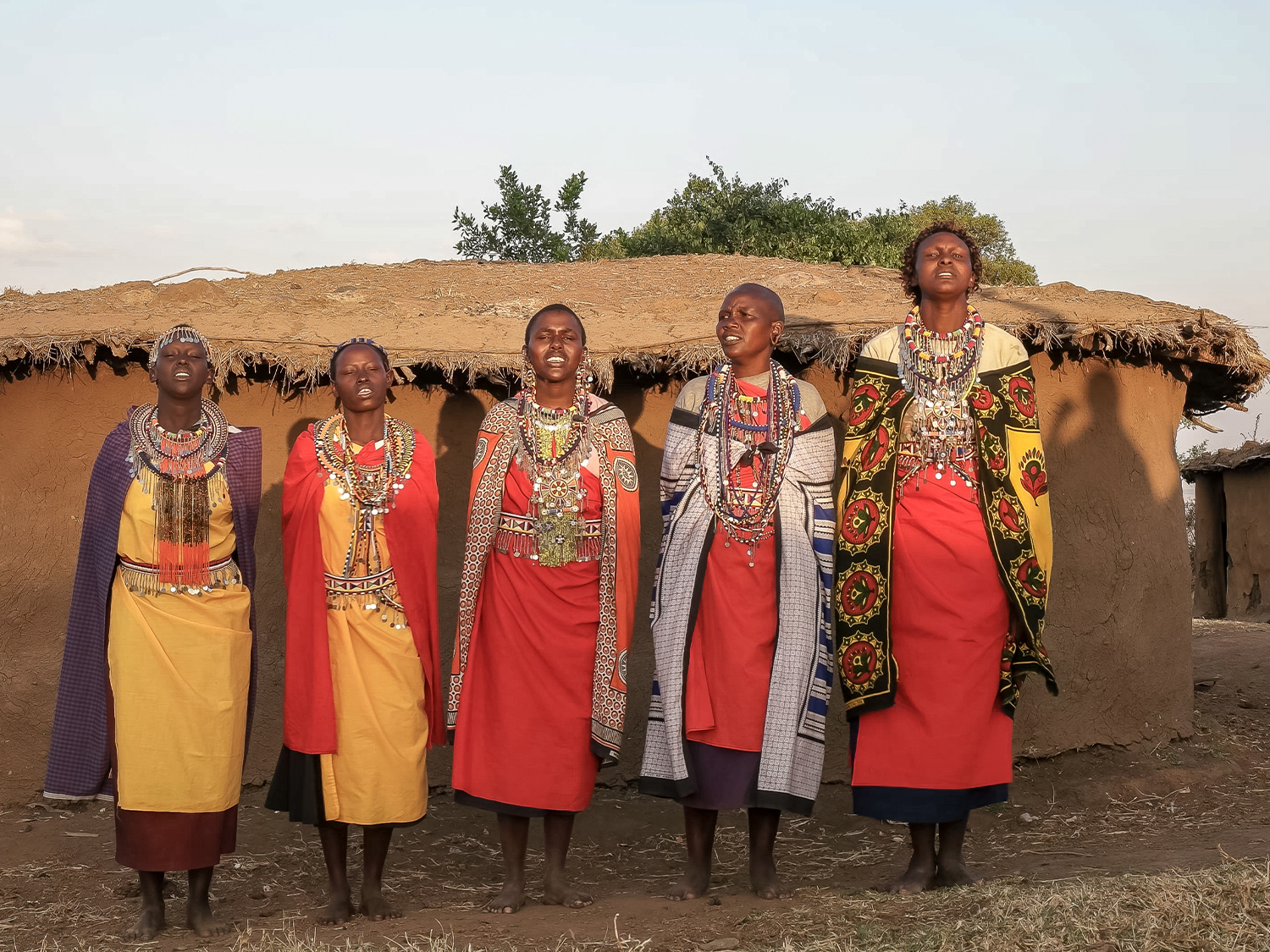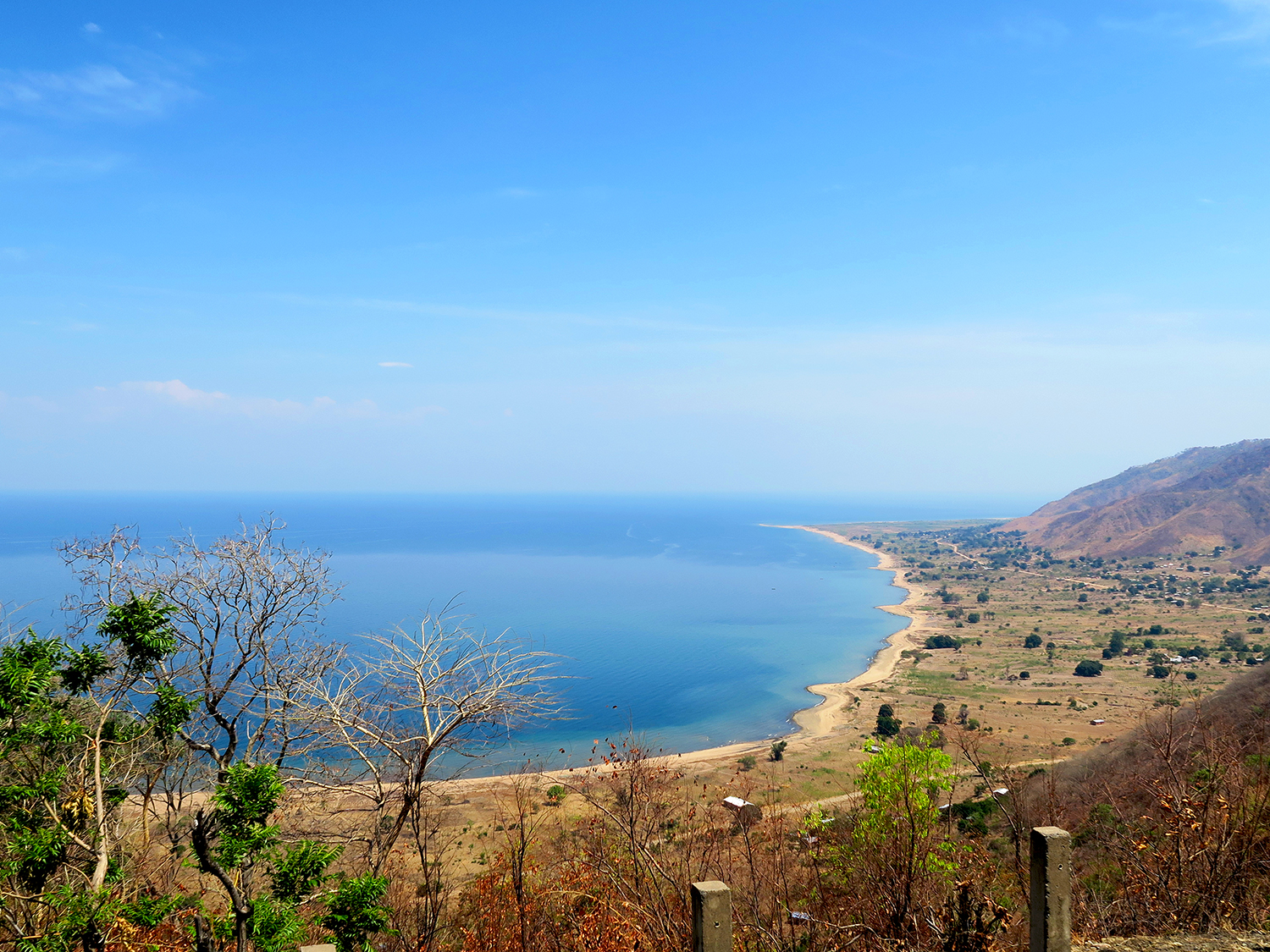The Great Wildebeest MigrationJoin On The Go Tours for an Unforgettable Journey Through the Heart of Africa's Iconic Wildlife Migration
When do you want to go?
2024
I'm flexible
Passengers
Adults (18+)
Children (0 - 17)
What is the Migration?
Every year the Serengeti Masai Mara ecosystem sees millions of wildebeest and hundreds of thousands of zebra migrate through parts of Kenya and Tanzania in search of the best food and water in time with the changing seasons. Generally following a similar path, they head north from Tanzania into Kenya, never straying too far from water. As you'd expect, the herds are in turn followed by lions, leopards, and other predators. And scenes of desperate animals trying to cross the Mara river despite the presence of hungry crocodiles are not uncommon. It's one of nature's great spectacle and well worth timing your trip to Africa with.
When does it happen?
Rather than a defined period, the migration occurs in a 12-month cycle, as animals travel from the southern Serengeti to greener pastures and back again, always following the rains. Read on to discover which are good months to visit some of the continent's best national parks in order to see the spectacle for yourself.
January - March
From mid December/January through to March the wildebeest of the southern Serengeti start their calving season. It is estimated that as many as half a million wildebeest calves are born during this period with as many as 8000 being born on any one day. This period sees the start of the first rainy season in the south Serengeti and like most animals in the wild it is always best to give birth at this time as rates of survival are far higher. The south Serengeti is also a great place for the mothers to give birth as the grass here is enriched with high levels of calcium and magnesium which helps with their milk production – plus the short grasses are safer as there aren’t as many lurking predators disguised in the long grass.
Good time to go?
Yes. The calving season in the south Serengeti can be an amazing thing to observe – this is the classic image of the Serengeti’s endless plains dotted as far as the eye can see with wildebeest. And with vulnerable wildebeest calves, some the apex predators and a great chance to see big cats on the hunt.
Our picks for where to stay to see the Migration from January - March:
Lake Ndutu Luxury Tented Lodge (Serengeti) - 20 well appointed tents sit beneath the giant Acacia trees with excellent views of Lake Ndutu. This luxury eco-friendly lodge only opened in December 2013 and offers bush walks, sun downers and game drives.
Kusini Camp (Serengeti) – Benefitting from being the only permanent camp in its area of the Serengeti, Kusini offers stunning open plan en suite tents with private verandas. Overlooking the grassy plains it is a great location to view the calving season right on its doorstep.
Kati Kati Tented Camp (Serengeti) – 10 classic en suite safari tents adorn this intimate camp. Meals are served in the attractive ‘Mess Tent’ and in the evenings around the roaring camp fire. A 2 hour safari drive takes you to the Olduvai Gorge Museum.
April - May
This period is known as the onset of the long rains and the herds start moving towards the central part of the Serengeti in search of fresh grass. They tend to split into various large groups, some beginning to head to the Western Corridor of the Serengeti towards Lake Victoria and others remain in Central and North Central Serengeti around the Seronera River. As the circle of life needs to continue this is also when the wildebeest start to mate again as their gestation period can be up to 9 months in length.
Good time to go?
It is not a good time for the concentrations of other animals as the rains have meant there are water sources all over the Serengeti, while in the dry months the animals tend to concentrate around the remaining watering holes. Also, with the rains comes the long grass, making game viewing a little harder. However in terms of seeing the migration it is a great time. You will also get to see plenty of the other animals, as they don’t disappear, but rather that they are scattered. Another plus for this time of year is that there are fewer people in the park and the hotel rates are upto 50% cheaper. You do however need to be aware that rain is likely.
Our picks for where to stay to see the Migration from April - May
Serengeti Serena Lodge (Serengeti) – Sitting adjacent to the Western Corridor and Grumeti River – the lodge’s domed rondavels blend nicely into the natural landscape. The lodge also benefits from a sparkling infinity pool that looks out across the plains of the Serengeti.
Serengeti Sopa Lodge (Serengeti) - Sitting in the South-western Serengeti, Sopa Lodge surprisingly doesn’t have the traditional thatched roof of most lodges in the area, instead opting for a flat one which is often turned into a cocktail reception area. Local furnishings adorn the 69 rooms which also all have private verandas for perfect game viewing.
Mbuzi Mawe Serena Camp (Serengeti) – Benefitting from only 16 spacious luxury tents, Mbuzi Mawe in the Western Serengeti offers a more intimate safari experience. The Mbuzi Mawe also offers the magical Balloon Safari and Bush Breakfast giving the ultimate views of the Serengeti from the comfort of a hot air balloon.
June - mid July
The herds are now split, with the majority in the Western Corridor of the Serengeti by the Grumeti River; where many cross the crocodile infested river, making for some amazing wildlife viewing. The other large herds are now in the North Central Serengeti heading towards the Northern Serengeti and Masai Mara. The vision of the migration over this period is the long lines of wildebeest as they head towards the north.
Good time to go?
Yes - particularly in the north of the Serengeti as the herd spend their last few weeks in Tanzania before making the journey north to Kenya.
Our picks for where to stay to see the Migration from June - mid-July
Grumeti River Camp (Serengeti) – 10 luxurious tented rooms make up the popular Grumeti River Camp. Set on raised wooden platforms these spacious tents have quiet private terraces looking out onto the Grumeti River – home to many resident hippos!
Ikoma Bush Camp (Serengeti) – Sitting near the boundary of the Serengeti, Ikoma is perfectly placed in the path of the migrating wildebeests. The 35 traditional Meru tents offer comfortable accommodation and the large camp fire is the perfect place to unwind at the end of the day a bia baridi (cool beer) in hand!
Migration Camp (Serengeti) – Nestled among rocky outcrops, 20 beautiful elevated tents each with 360-degree verandahs make up this stunning camp on the banks of the Grumeti River. Migration camp also benefits from a split-level lounge, outdoor swimming pool and restaurant.
Mid July - October
Continuing north, some of the smaller herds will be reaching the Masai Mara by as early as late June, early July. The larger, or mega-herd obviously takes a bit longer and generally reaches northern Serengeti / Kenya’s Masai Mara in August. It is over this period that the wildebeest need to cross the Mara River in order to get across the to the lush grass of the Masai Mara. The herds keep crossing at various points of the Mara River and many of these crossing points are in the Serengeti as well as the Masai Mara. It is the Mara River that bears witness to some of the most spectacular crossings of the migration. The vertigo-inducing banks can be the first downfall (literally) of the wildebeest – although once they’ve cleared that they then have the second challenge of getting to the other side without being snapped up by the lurking hungry crocodiles in the water. Once this obstacle has been passed there is the steep banks on the otherside that they now need to climb up - not an easy feat having crossed a river and now fighting with the other hundred wildebeest trying to get out. The majority die by drowning rather than being eaten by crocodiles. Despite the dangerous conditions most of the wildebeest actually make it to the other side unscathed. This is the classic all-action part of the migration. It certainly isn’t for the faint-hearted and as amazing as it is, it does show nature at its most brutal.
Good time to go?
Yes! This is prime migration season, a great time to visit the Serengeti or the Masai Mara and certainly a good time to game watch at the Mara River. Note that generally the busiest crossing period is between August and October.
Our picks for where to stay to see the Migration from mid July - October:
Little Governors Camp (Masai Mara). Intimate yet luxurious, two ways to describe the popular Little Governers Camp in the Masai Mara. 17 beautiful tents encircle a large watering hole teeming with birds and wildlife. This is the choice for those who want the best location in the Mara but without the crowds.
Elephant Pepper Camp (Masai Mara). The ultimate in eco-lodge luxury, Elephant Pepper Camp is located surrounded by pristine wilderness for excellent game viewing. Just 9 tents adorn this beautiful location and the whole camp is packed up every 9 months to let the grasses regenerate for 3 months.
Karen Blixen Camp (Masai Mara). Located in the Oloisuk Concession – this eco-friendly camp is the perfect luxury retreat for a trip to the Masai Mara. Large stylish tents are perfectly placed with impressive views of the Mara River – where the real migration action happens!
November - December
After some time spent in the Masai Mara the herds and the short rains begin to head south back into Tanzania. The circle of life is almost complete and the wildebeest begin to return to the mineral rich short grassed plains of the southern Serengeti so they can once again begin their calving season and start the journey again.
Good time to go?
This isn’t a great time to try and find the wildebeest as the majority of where they are travelling is full of rapidly growing tall grass which can make wildlife viewing quite a challenge.
Our picks for where to stay to see the Migration from mid July - October
Kleins Camp (Serengeti). Looking out from the Kuka Hills, Kleins Camp offers fantastic views across the endless plains of the Serengeti. Ten stone thatched cottages make up this stunning camp all with private verandas and a refreshing outdoor pool perfect for cooling down in - the ultimate in African luxury!
Seronera Wildlife Lodge (Serengeti). In the heart of the Serengeti, Seronera is perfectly located to witness the migration from. One of the larger lodges with all rooms decorated in an authentic African style. The lodge is also boasts from delicious meals and a great sundowners bar with breathtaking views across the Serengeti.
Ronjo Camp – (Serengeti). In the beautiful Banagi Valley, Ronjo Camp offers 16 permanent tents each with stunning private views across the plains. A restaurant, bar and open fire place are great places to sit back, relax and share stories of the big game you have spotted that day!
Trips to see the Great Migration
Witness the Great Wildebeest Migration on an Overland Safari Tour
Many of our Overland Safari Holidays visit East Africa at either the start or end of the tour. Our Best of Kenya and Tanzania Overland Safari visits both the Serengeti and the Masai Mara so if you plan your trip well then you have a great chance of seeing some of the migration. Our Gorilla Trek and Tanzania spends time in the Masai Mara before heading north to Uganda for some Gorilla trekking and later south to the Serengeti.
Lodge accommodated safaris to see the Great Wildebeest Migration
All of our East Africa lodge accommodated safaris visit either the Masai Mara, Serengeti or both. Those wanting to concentrate on the migration in the Serengeti will like our Tanzania Wildlife Week and if the migration in the Masai Mara is what you really want to see then Kenya Wildlife Week is for you. If however you want the ultimate East Africa lodge accommodated safari then why not mix up the two on our Kenya and Tanzania Trails which heads to both the Serengeti and Masai Mara!
Discover the Great Wildebeest Migration on your own private safari
Our Kenya Up Close private safari holiday spends 2 nights in the Masai Mara with lots of included game activity - so if you time it for the second half of the year you could well see the migration in the Mara. The Best of East Africa flies between the Masai Mara and the Serengeti as well as exploring lots of other great national parks in the region. Wild About Tanzania focuses on some of Tanzania's best national parks including the migration in the Serengeti at the right time of year.
Our Africa travel styles
We offer a range of different trip types in Africa. From overland camping tours to lodge safaris and everything in between. As well as group trips, we also offer a selection of private safaris and those suitable for families with children aged 8 and over. Discover our different Africa travel styles below.
